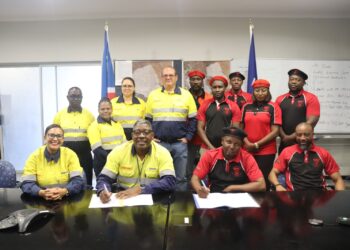
Namibia could generate N$13.9 billion in revenue from wind turbine tower and blade production, a report by global consultancy firm McKinsey & Company states.
The study, part of the green manufacturing strategy for Namibia, highlights the significant economic benefits of embracing local production.
The report outlines that the local production of towers and blades has the potential to unlock an additional US$700 million (N$13.9 billion) in the country’s GDP by 2050.
The breakdown includes a direct contribution of 30%, an indirect contribution of 41%, and an induced contribution of 29%.
In addition to economic gains, the local production initiative is projected to create around 27,000 jobs by 2050.
The distribution of employment opportunities is expected to be 26% direct, 38% indirect, and 36% induced.
McKinsey recommends a minimum production scale of 0.5 GW/year for blade production and 80-210 towers annually to meet near-term demand.
The report suggests a growth rate of 6% per year to meet the projected demand in 2050, particularly driven by green hydrogen production in the //Kharas and Erongo regions.
“Green hydrogen production in Namibia is estimated to demand 20GW of wind energy generation capacity that would be the primary off taker for locally produced wind turbine towers and blades,” the report noted.
The report thus adds that Namibia could focus on meeting local demand and supplying wind turbine blades regionally in the longer term.
“The opportunity for Namibia is to engage in local tower and blade manufacturing and wind turbine assembly in proximity to main demand centres (such as //Kharas region and Erongo in the near-term, and Kunene in the longer term),” the report said.
This comes as planned green hydrogen production in //Kharas, Erongo, and Kunene is respectively expected to require 14GW, 6GW, and 32GW of wind energy by 2050, thereby providing a significant domestic market for wind turbines
“Namibia is expected to be able to produce concrete towers and blades at competitive costs. Namibia could capture this opportunity through attracting direct investment from established OEMs for blade production, and encouraging local players to engage in tower production (e.g., by facilitating access to start-up capital),” McKinsey said.
According to the report, Namibia’s theoretical potential for wind energy capacity is ~4.5TW. Current wind generation capacity (22GWh/year) represents ~1.5% of total generation capacity (1470GWh/year).
“Green hydrogen production is anticipated to drive demand with planned/ targeted capacity requirements estimated at +20 GW by 2050,” said the report.
This comes as turbine production is currently concentrated with European OEMs that have 40-50% of the global market, with the Chinese OEMs anticipated to scale rapidly in the coming years due to local demand and government support.- miningandenergy.com.na











